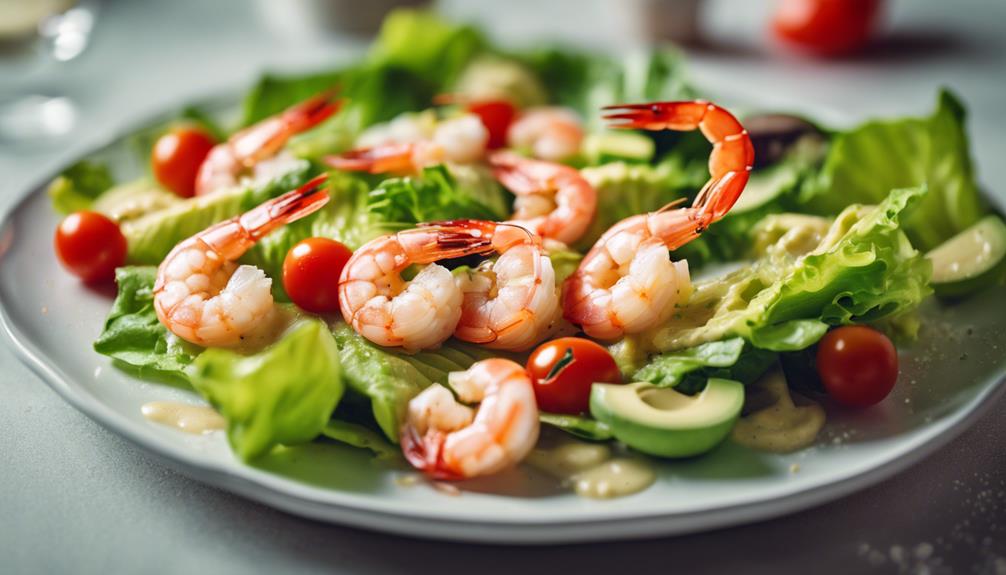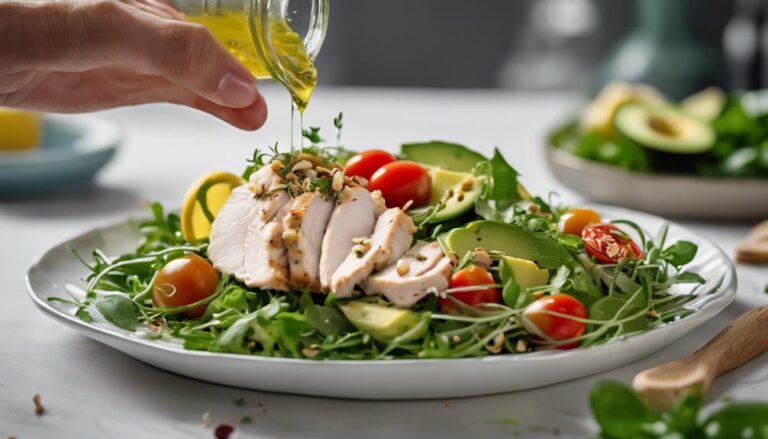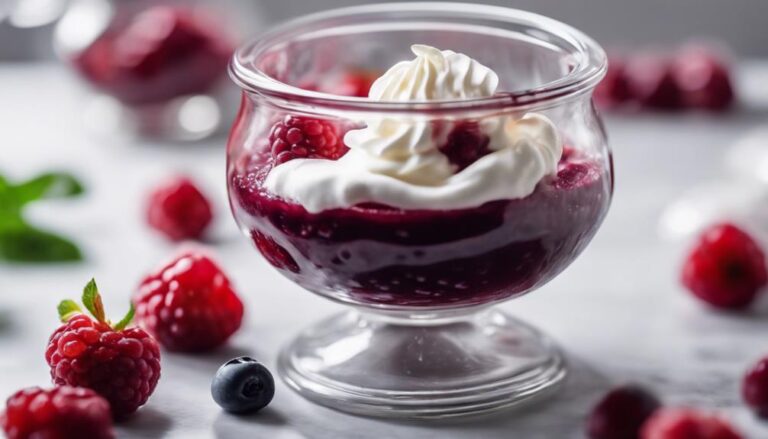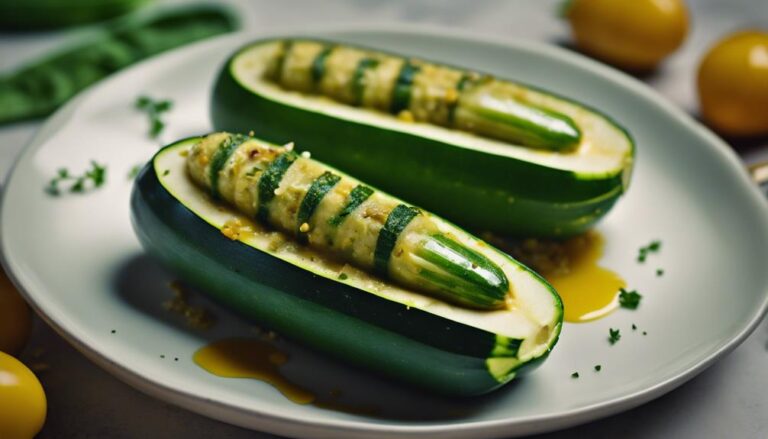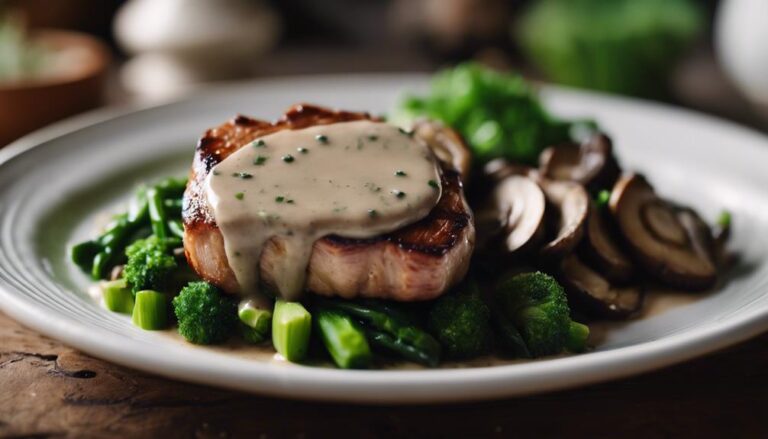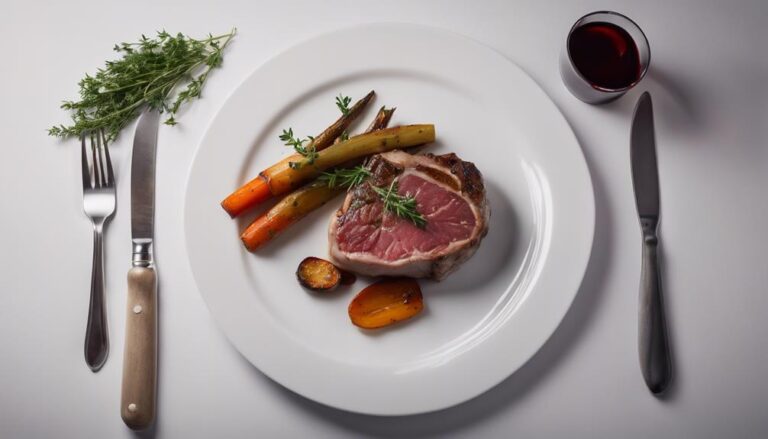Lunchtime Treat: Sous Vide Lectin-Free Shrimp Caesar Salad
Indulge in a nutrient-rich lunchtime delight with Sous Vide Lectin-Free Shrimp Caesar Salad. Enjoy tender shrimp infused with aromatic herbs and spices in a homemade Caesar dressing, over a bed of fresh Romaine Lettuce, and topped with gluten-free croutons for that perfect crunch. Opt for kale or spinach swaps for the lettuce, or quinoa for added protein. Experiment with cheeses, nuts, or seeds for a unique twist. Elevate flavors with fresh herbs like basil or parsley. Your taste buds are in for a treat with this flavorful and wholesome dish.
What You Will Learn Here
- Sous vide cooking method ensures tender, flavorful Lectin-Free Shrimp.
- Homemade Caesar Dressing enhances salad taste without lectins.
- Nutritional Yeast Flakes add nutrients and umami flavor.
- Explore ingredient substitutions like kale or quinoa for variety.
- Fresh herbs like basil or mint elevate the salad's flavor profile.
Origin of Sous Vide
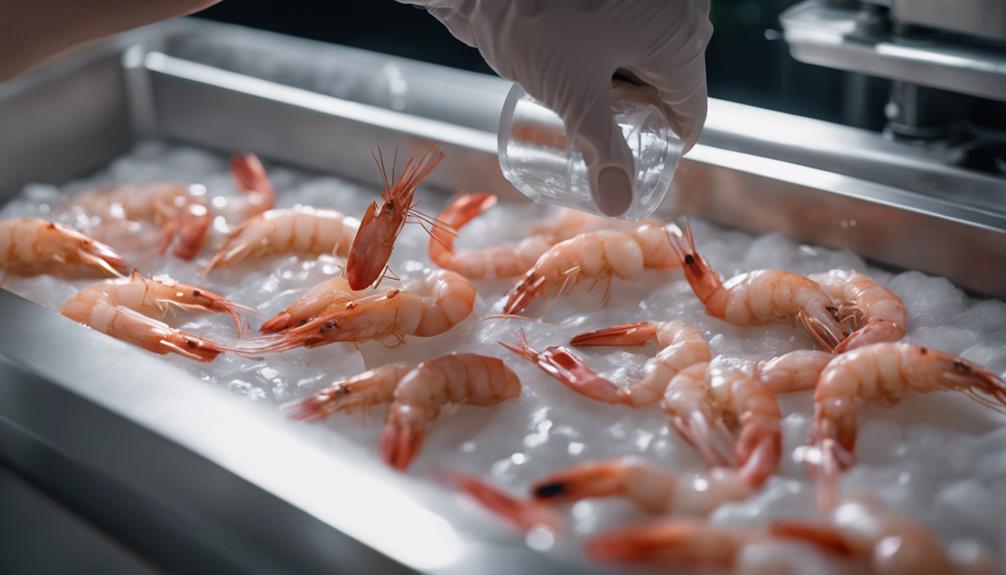
Sous Vide is a cooking technique that involves vacuum-sealing food and cooking it in a precisely controlled water bath. Its development can be traced back to the late 18th century, but it gained widespread popularity in the culinary world in the 1960s.
Today, sous vide is celebrated for its ability to enhance flavors, textures, and consistency in a variety of dishes.
Sous Vide Technique
The technique known as sous vide, which originates from French culinary practices, involves cooking food in a precisely controlled water bath. This method offers various benefits, such as flavor retention and reduced cooking time. To achieve sous vide perfection, you'll need specific equipment like a sous vide precision cooker, vacuum sealer, and food-safe bags. By using this method, you can lock in the flavors of your ingredients, ensuring a delicious outcome. The controlled temperature in the water bath allows for even cooking, resulting in tender and juicy meals every time. Check out the table below to see a comparison of traditional cooking methods versus sous vide:
| Cooking Aspect | Traditional Cooking | Sous Vide |
|---|---|---|
| Flavor Retention | Variable | Excellent |
| Cooking Time | Longer | Reduced |
| Texture | Inconsistent | Consistent |
| Moisture Loss | Common | Minimal |
Historical Development
The technique of sous vide cooking has its origins in French culinary tradition. Dating back to the late 18th century, sous vide, which translates to 'under vacuum,' initially involved cooking food in airtight containers placed in water baths at low temperatures. This method was primarily used for food preservation. Over time, with the culinary evolution and technological advancements, sous vide transformed into a precise cooking technique.
In the 1960s, sous vide gained popularity when French and American chefs began experimenting with vacuum-sealing food in plastic bags and cooking them at precise temperatures for extended periods. These innovations marked a significant shift in the culinary world.
The historical context of sous vide showcases its journey from a preservation method to a modern cooking technique embraced by chefs worldwide.
Today, sous vide has seen modern adaptations with the introduction of immersion circulators that precisely control water temperature, allowing for even cooking. Its integration into professional and home kitchens demonstrates the enduring influence of historical techniques combined with contemporary advancements.
Culinary Applications
Originating from its historical roots in French culinary tradition, the technique of sous vide has evolved to find diverse culinary applications in modern kitchens. This method offers a myriad of benefits, from enhancing flavors with flavorful marinades to enabling creative presentation through innovative ingredient combinations.
When it comes to flavorful marinades, sous vide cooking allows ingredients to marinate for an extended period, resulting in rich and deep flavors that infuse into the food. This technique is particularly useful for proteins like shrimp, chicken, or beef, where the flavors can be enhanced through this slow cooking process.
Moreover, sous vide provides health benefits by preserving the nutrients and natural juices of the ingredients, offering a healthier alternative to traditional cooking methods. By using fresh and quality ingredients in unique combinations, you can create dishes that not only taste delicious but also contribute to a balanced diet.
In the table below, explore the exciting possibilities that sous vide cooking can bring to your culinary creations:
| Culinary Application | Description | Benefits |
|---|---|---|
| Flavorful Marinades | Enhances the taste with prolonged marination | Rich and deep flavors infused into the food |
| Creative Presentation | Allows for innovative ingredient combinations | Unique and visually appealing dishes |
| Health Benefits | Preserves nutrients and natural juices | Healthier alternative to traditional cooking |
Key Salad Components
- Fresh Romaine Lettuce: Crisp and nutrient-rich, providing a base full of vitamins and minerals.
- Sous Vide Lectin-Free Shrimp: Tender and flavorful protein source, cooked to perfection for a delightful texture.
- Homemade Caesar Dressing: Creamy, tangy, and free of lectins, enhancing the overall taste of the salad.
- Toasted Gluten-Free Croutons: Crunchy and seasoned just right, adding a satisfying contrast to the salad.
- Nutritional Yeast Flakes: Cheesy flavor without lectins, boosting the umami taste profile and providing extra nutrients like B vitamins.
Trendy Shrimp Caesar Salad
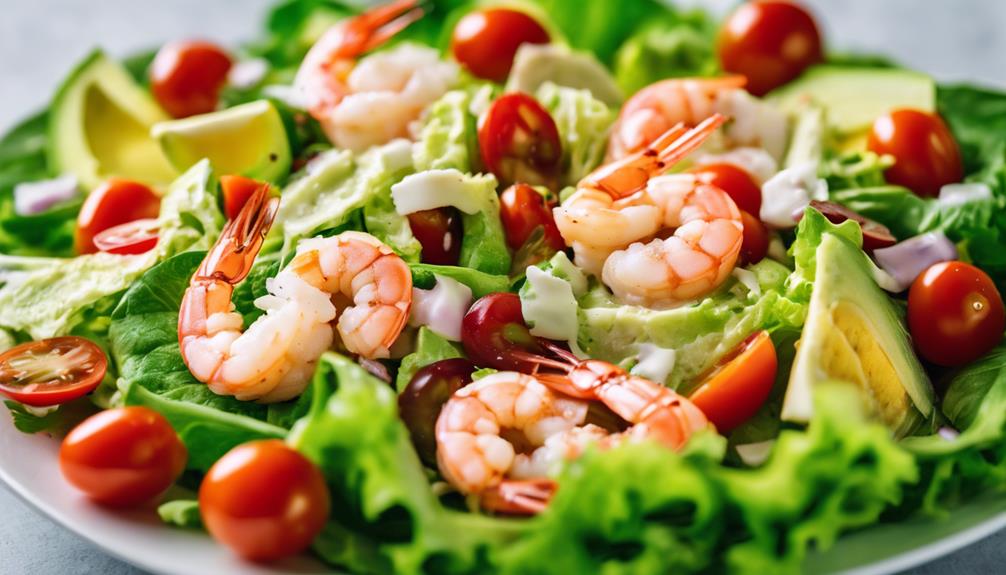
When it comes to the trendy Shrimp Caesar Salad, there are some key points worth noting.
This variation of the classic Caesar salad brings a unique twist by incorporating succulent shrimp as the star protein.
If you're looking for an innovative recipe to elevate your salad game, this Shrimp Caesar Salad is a must-try.
Shrimp Caesar Salad Variation
For a trendy twist on the classic Caesar salad, consider incorporating succulent shrimp as the star protein in the dish. Elevate your dining experience with this Shrimp Caesar Salad variation that tantalizes the taste buds and adds a touch of sophistication to your meal.
Here are five tips to perfect this stylish twist:
- Caesar Dressing: Opt for a creamy Caesar dressing with a hint of lemon to complement the shrimp's delicate flavor.
- Shrimp Pairing: Choose large, juicy shrimp that have been perfectly cooked to enhance the salad's texture and taste.
- Salad Toppings: Sprinkle crispy bacon crumbles over the salad for a savory crunch that contrasts beautifully with the shrimp.
- Sous Vide Technique: Utilize the sous vide method to make certain your shrimp is tender, flavorful, and cooked to perfection.
- Fresh Greens: Select a mix of fresh, crisp greens like romaine lettuce and baby kale to provide a vibrant base for your salad.
Unique Shrimp Caesar Twist
To infuse a modern touch into the traditional Caesar salad, elevate your culinary experience with a trendy Shrimp Caesar Twist that showcases succulent shrimp as the star protein. The unique twist brings a delightful combination of flavors and textures to the classic Caesar salad, adding a touch of elegance to your dining experience.
- Caesar Dressing: The creamy and tangy Caesar dressing perfectly complements the fresh shrimp, creating a harmonious flavor profile.
- Shrimp Tenderness: Ensuring the shrimp is cooked to just the right softness is essential to maintaining its juicy and delicate texture.
- Fresh Romaine Lettuce: Crisp and invigorating, the romaine lettuce serves as the base, providing a satisfying crunch to each bite.
- Parmesan Shavings: The nutty and salty notes of Parmesan shavings add depth to the salad, enhancing its overall richness.
- Garlic Croutons: The garlicky croutons bring a delightful crunch and burst of flavor, enhancing the salad's texture and taste.
Innovative Shrimp Caesar Salad Recipe
Elevate your Caesar salad game with this innovative Shrimp Caesar Salad recipe that promises to tantalize your taste buds with a trendy twist on a classic favorite.
When preparing this dish, consider these tips to ensure a delightful culinary experience:
- Caesar Dressing Alternatives: Experiment with homemade avocado Caesar dressing or a tangy yogurt-based version for an invigorating take on the traditional dressing.
- Shrimp Cooking Methods: Try grilling the shrimp for a smoky flavor, or pan-sear them with garlic and lemon for a burst of zest in every bite.
- Ingredient Substitutions: Swap romaine lettuce for kale or spinach for a nutrient-packed variation, or use quinoa instead of croutons for added protein and crunch.
- Salad Presentation Ideas: Garnish your salad with shaved Parmesan cheese curls for an elegant touch, or sprinkle crispy bacon crumbles on top for a savory twist.
- Fresh Herb Additions: Mix in chopped fresh basil or parsley to brighten up the flavors and add a pop of color to your salad creation.
Sous Vide Shrimp Preparation
To prepare shrimp sous vide, you'll focus on three key points:
- Tenderizing the shrimp texture
- Infusing flavors during the cooking process
- Maintaining precise cooking temperatures
This method guarantees that the shrimp turns out perfectly cooked, with a tender and juicy texture.
Tenderizing Shrimp Texture
For a perfectly tender texture in your sous vide shrimp preparation, make certain to marinate the shrimp in a citrus-based mixture before vacuum-sealing them for cooking. This tenderizing technique helps break down the proteins in the shrimp, resulting in a more delicate and succulent texture when cooked sous vide.
By allowing the shrimp to marinate in a citrus-infused solution, you not only enhance the natural flavors of the shrimp but also guarantee a juicy and tender bite with each mouthful.
When marinating the shrimp, consider using ingredients like lemon juice, lime juice, or orange zest to add a bright and invigorating flavor profile to your dish. These citrus elements not only impart a zesty taste to the shrimp but also work wonders in tenderizing the protein structure, making the shrimp more enjoyable to eat.
Flavor Infusion Process
Enhance the flavor profile of your sous vide shrimp by infusing them with aromatic herbs and spices during the vacuum-sealing process. The flavor infusion technique allows the shrimp to absorb the delicious essence of the added ingredients, creating a more dynamic taste experience.
By carefully selecting herbs like rosemary, thyme, or spices such as garlic and paprika, you can elevate the natural flavors of the shrimp.
During the vacuum-sealing process, make sure that the herbs and spices are distributed evenly among the shrimp to guarantee consistent flavor infusion. Proper temperature control is essential to maintain the integrity of the ingredients and prevent any potential bacterial growth.
The vacuum-sealed bag traps the flavors and aromas, allowing the shrimp to marinate in the herb and spice blend as they cook sous vide style.
With attention to detail and a focus on flavor infusion, your sous vide shrimp will be bursting with taste, ready to take your Caesar salad to the next level of culinary delight.
Precise Cooking Temperature
Maintain peak flavor and texture in your sous vide shrimp by accurately controlling the cooking temperature throughout the preparation process. Temperature control is essential when using the sous vide cooking technique to guarantee seafood tenderness.
Set your sous vide machine to 135°F (57°C) for perfectly cooked shrimp that are juicy and tender. This precision cooking method allows the shrimp to cook evenly and retain their natural flavors without becoming tough or rubbery.
By maintaining a consistent temperature, you can achieve the best results with your shrimp, enhancing their taste and texture. The gentle cooking process of sous vide helps to preserve the delicate nature of the shrimp, keeping them succulent and flavorful. Remember to seal the shrimp in a vacuum-sealed bag before placing them in the sous vide water bath to ensure even cooking.
With accurate temperature control and the right cooking technique, you can elevate your shrimp Caesar salad to a whole new level of deliciousness. Mastering the art of sous vide cooking will enable you to serve perfectly cooked shrimp every time, delighting your guests with the exquisite tenderness of this seafood delicacy.
Final Thoughts
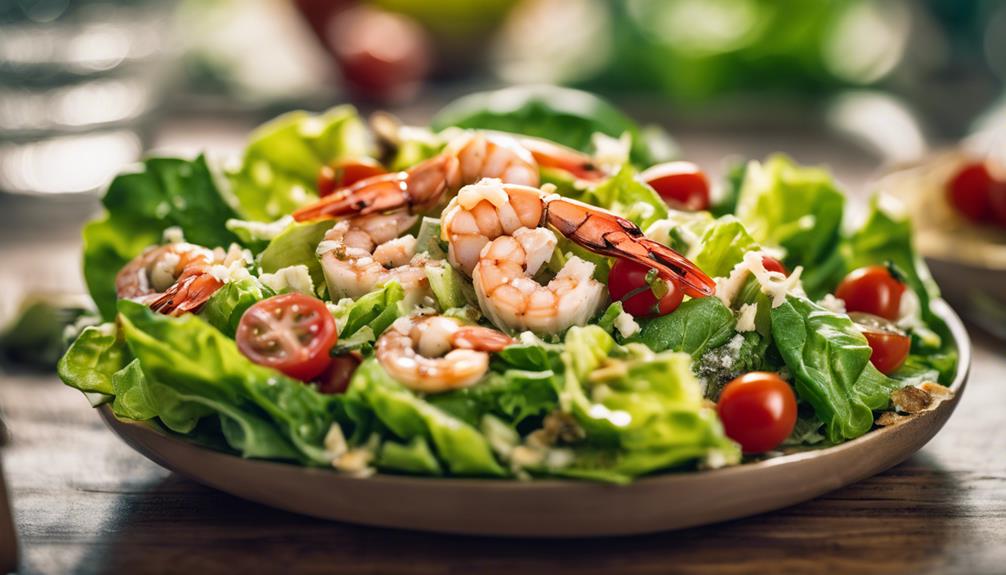
Consider reflecting on the overall experience and flavors of this Sous Vide Lectin-Free Shrimp Caesar Salad before you conclude your culinary journey with this delightful dish. This salad not only caters to your taste preferences but also offers health benefits that align with your meal planning goals. The tender sous vide shrimp combined with the crisp romaine lettuce and creamy Caesar dressing create a harmonious blend of textures and flavors that are sure to satisfy your palate.
To help you summarize your experience, here's a breakdown of what you've explored in this sous vide shrimp Caesar salad:
| Aspects | Details |
|---|---|
| Health Benefits | Lectin-free ingredients promote wellness |
| Meal Planning | Convenient for a quick, nutritious meal |
| Ingredient Substitutions | Easily adaptable to suit your dietary needs |
| Taste Preferences | Customizable to match your flavor profile |
Frequently Asked Questions
How Can I Adapt This Recipe for a Vegetarian Diet?
To adapt the recipe for a vegetarian diet, consider using plant-based protein like tofu or chickpeas as meatless options. Make recipe modifications by swapping shrimp for vegetarian alternatives. These changes will cater to a vegetarian diet without compromising flavor.
Are There Any Alternatives to Using Shrimp in This Salad?
If you're looking for meatless options for your salad, consider tofu, chickpeas, or tempeh as alternatives to shrimp. Seafood alternatives could include hearts of palm, marinated artichoke hearts, or even vegan shrimp for variety.
Can I Make the Caesar Dressing Ahead of Time?
Yes, you can make the Caesar dressing ahead of time. Store it in an airtight container in the fridge for up to 5 days. This will help the flavors meld together for a more robust taste while keeping the consistency intact.
Is It Necessary to Use a Sous Vide Machine for the Shrimp?
You don't need a sous vide machine for the shrimp. Try poaching or grilling as tasty alternatives. Serve with love and creativity. Your guests will appreciate the delicious meal, regardless of the cooking method chosen.
Can I Substitute the Romaine Lettuce With Other Greens?
You can switch romaine lettuce in your salad for a spinach alternative, arugula substitute, kale option, or spring mix swap. These greens offer different flavors and textures to elevate your dish and cater to various preferences.
Conclusion
To sum up, sous vide cooking offers a precise and convenient method for preparing delicious, lectin-free shrimp Caesar salads.
By using this trendy cooking technique, you can achieve perfectly cooked shrimp every time, adding a touch of sophistication to your lunchtime routine.
With the right combination of fresh ingredients and careful preparation, you can enjoy a flavorful and healthy meal that's sure to satisfy your taste buds.
Bon appétit!
